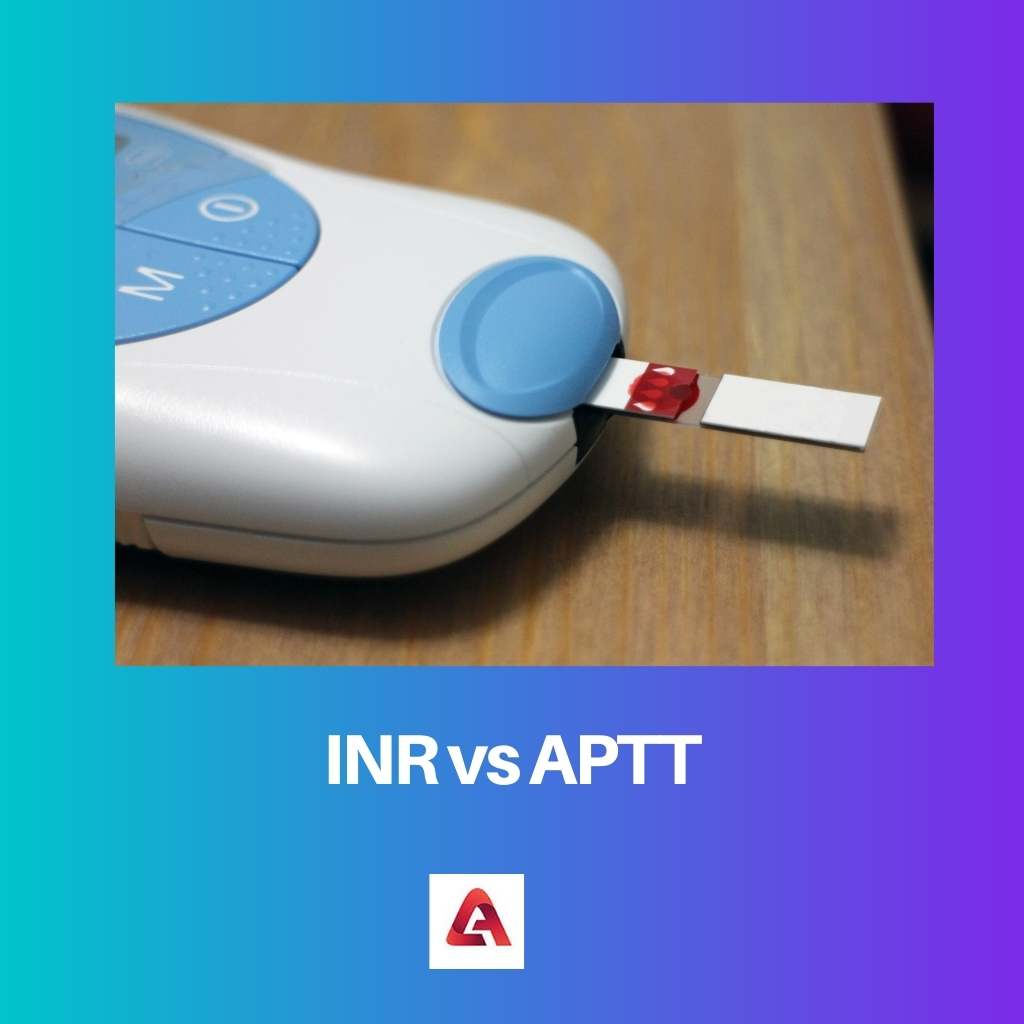Both of these are used to measure blood clot time but have some specialities. So here are some differences between them to understand these tests better.
Key Takeaways
- INR measures the extrinsic and common clotting pathways, while APTT assesses the intrinsic and common pathways.
- Doctors use INR to monitor warfarin therapy, while APTT monitors heparin therapy.
- INR provides consistent results across labs, while APTT can vary depending on the reagents used.
INR vs APTT
INR (International Normalized Ratio) is primarily used to monitor the effectiveness of the anticoagulant medication warfarin in preventing blood clots. APTT (Activated Partial Thromboplastin Time) is used to evaluate the effectiveness of heparin therapy or to diagnose bleeding disorders.

This test also determines the consistency of blood. Sometimes patients who have some disease or are gone under any operations have thin blood.
APTT test is used to detect Heparin therapy as well as blood clotting range. Heparin is a anticoagulant. This helps to stop the blood clot.
Comparison Table
| Parameters of Comparison | INR | APTT |
|---|---|---|
| Full form | International Normalized Ratio is the full form of INR. | Activated Partial Thromboplastin Time is the full form for APTT. |
| Used to detect | This is used to detect Blood clotting time. | This is used to detect Heparin therapy as well as blood clotting range. |
| Clotting factors | This can assess the coagulation factors XII, XI, IX, VIII, X, V, II, I. | This can assess the coagulation factors V, VIII, IX, X, XI, XII. |
| Heparin sensitivity | Less sensitive | More sensitive |
| Normal range | 10 to 14 seconds | 30 to 40 seconds |
What is INR?
The full form of INR is International Normalized Ratio. It is a blood test. This test is also called PT. The full form of PT is Prothrombin Test. This test is done to measure the blood clotting time.
If the clotting time is too fast or slow is not good. The number of platelets is always counted if the patient undergoes heavy bleeding conditions.
Prothrombin is a protein produced by the liver. Like many other proteins, this is also an important protein that contributes to blood clotting.
This test is a part of the blood test prescribed by the doctor. Some other tests are also done to check the heparin level of the patient, as the INR test is less sensitive to Heparin.

What is APTT?
Activated Partial Thromboplastin Time is the full form for APTT. This test is also done to calculate the coagulation time.
APTT test is used to detect Heparin therapy as well as blood clotting range. Heparin is a anticoagulant.The normal range of APTT is 30 to 40 seconds for a healthy adult.
This test explains that how healthy the body is as the blood clotting process is a very important part of a healthy person. The platelets are also counted in this test.
Main Differences Between INR and APTT
- INR test is less sensitive to heparin, but in comparison to that, the APTT test is more sensitive to heparin.
- The normal range of the INR test is 10 to 14 seconds on the other hand, the normal range of the APTT test is 30 to 40 seconds.

- https://www.sciencedirect.com/science/article/pii/S004938480600243X
- https://www.sciencedirect.com/science/article/pii/0049384894902720
- https://www.researchgate.net/profile/Husamettin-Vatansev/publication/280443384_Effect_of_gender_and_age_on_the_prothrombin_time_PT_activated_partial_thromboplastin_time_aPTT_levels_and_international_normalized_ratio_INR/links/55dc5e5b08aeb38e8a8cf07e/Effect-of-gender-and-age-on-the-prothrombin-time-PT-activated-partial-thromboplastin-time-aPTT-levels-and-international-normalized-ratio-INR.pdf

Great job! Now our community can have a fuller understanding on this topic.
It was quite enlightening. Many thanks for sharing it with us.
I find this topic utterly useful. The differences and comparison explained well, thank you.
Amazing diverse summary, this article contains every tiny detail about the topic.
This is a very helpful and informative article. It helps me a lot to improve my knowledge.
I agree, I will use this platform to improve my knowledge on a regular basis.
These details are extremely beneficial for students who are in the medical field.
Fascinating and detailed explanation. It was a pleasure to read it.
Absolutely, I added this information to my newsletters for further reference. Thank you for the detailed post.
This article is really helpful and informative. I enjoyed reading it thoroughly.